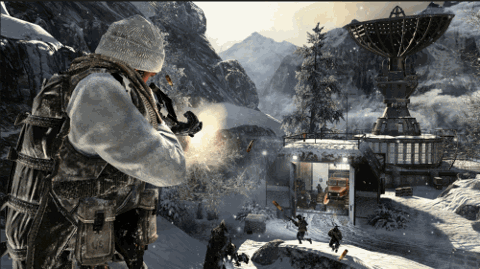In game development, level design -- the creation of a game’s logic and progress -- can be a tricky entry point for even experienced professionals. But it’s a highly desirable place to be, and also a great launching pad for
game designers. As a whole, game studios -- particularly those with top shelf titles -- are highly competitive and difficult to break into. TJ Summers, co-founder of placement firm Digital Artist Management, notes that employers in the space are project-driven, and when they do look to hire, they’re seeking candidates with credits that are similar to their own products. For example, a studio working on a first-person shooter will want a level designer who can walk in the door with intimate knowledge of how such games should run.
Click here to find a game design job. “I think we’re down to 15 AAA, premiere studios for any level design opportunities that may become available,” says Summers. “There’s always a lot of poaching and we’re seeing much less movement within that space because there’s not as many options to go elsewhere. Since so few games are being made, and the same people are vying for the same roles, it becomes a matter of hiring for cultural fit and passion for a product that translate into the soft skills that really make a difference.”
Old School Ways to Get Attention
Mick Hobson, a co-founder of Velocity Games, agrees that level design jobs are hard to get. Besides talent and social fit, he notes, landing one requires luck and persistence. However, he does have a couple of concrete ideas for getting on an employer’s radar. First, suss out what qualities and qualifications you need for a preferred role. Hobson suggests you “speak with studios directly to see how they hire, when they might be hiring and how someone would generally get a foot in their door.” Another avenue is to send hiring managers a personalized introduction that explains why you’re attracted to their studio and what professional and personal benefits you can bring to the table. As in any other industry, the best jobs are the ones that aren’t advertised. So, networking is critical. Attending industry events, meetups and the like can provide you with openings to gain insight into a studio’s wants and needs, as will talking to designers about career opportunities or possible collaborations.
Build Your Portfolio
Even with such limited opportunities at the large studios, Summers sees an opportunity to take advantage of easily available software that “allow the average Joe to go off and work on their own products.” (Among them are Game Editor, GameMakerStudio, Sludge, GameCreators, GameDiscovery, YoYoGames, 3D Game Studio A8, AGS and DX Studio.) The results can be promising for a level designer looking for a bigger project. Indeed, the wealth of sandbox tools and creative options in mobile and online gaming can be a boon for ambitious candidates. “The bare entry to work on games is a lot different today,” Summers says. “There are all these new ways designers can innovate and shape a product.” Once you’ve created a mobile game, you can offer it in the app stores – and not necessarily worry about marketing it, Summers continues. Developing a game may not be a way to make money so much as a way to “build a foundation and then go to an employer and say ‘these are the types of projects I’ve developed.’ Creating a portfolio of what you’ve done is the most valuable thing you can do.”
Related Stories
Image: Square Enix 

